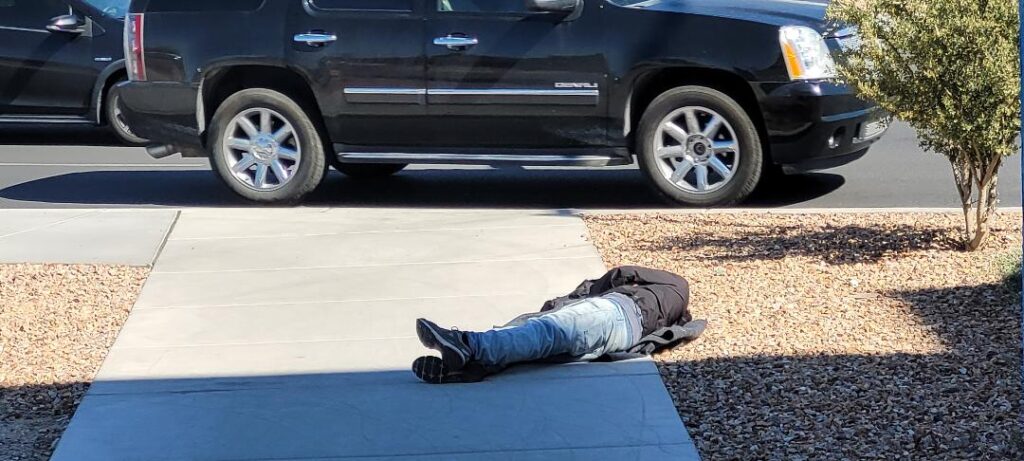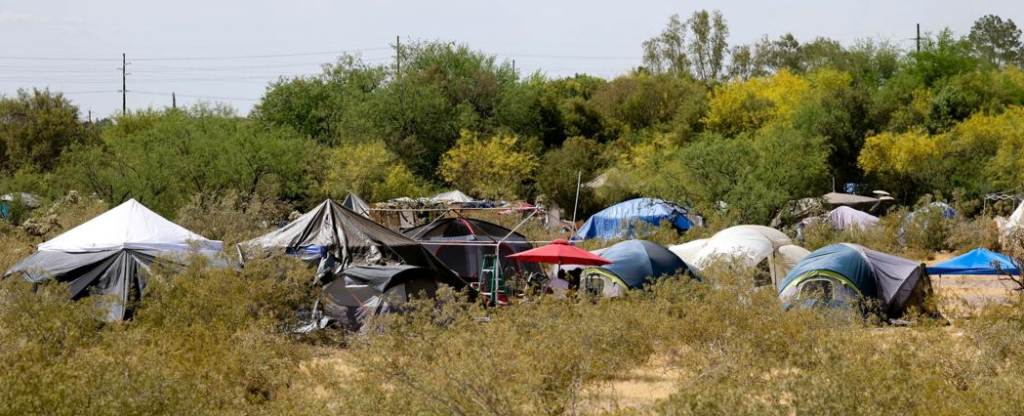There was a time, not so long ago, when this would have been alarming. I submit that this should not be considered a “new norm.” It should be considered, now, as it has always been: abnormal.

The truth is, the “normalcy” of this scene is just a term we give to things we previously didn’t understand, but now we do. We used to see a guy lying on a sidewalk in the sun and become alarmed because we didn’t know. But we know now. We know the guy is homeless, probably an addict, probably sleeping it off, probably going to be there tomorrow and the next day, and the next. It’s true. I saw the same dude two days earlier, although sitting up, in the same spot. Before I took this picture, I watched three people walk right by without even glancing down at him. That’s extraordinary. Or is it?
If this guy’s been semi-conscious or passed out in this location for days, and those three people have been walking by him on their way to work for days, why would they bother glancing at him again and again? So, what are we supposed to do? Well, what would we have done ten years ago? If a guy was laid out on the sidewalk, non-responsive, someone would have called the paramedics or police. Unfortunately, it’s become common knowledge that anyone passed out on a sidewalk at 11 a.m. needs more help than the paramedics or police can provide. That’s a sad state of affairs. I can’t help but wonder if we’ll ever get back to where something like this is abnormal again.
He was breathing steadily but non-responsive. I slipped a card into his jacket—maybe he’ll call. I didn’t have time to stick around, but the paramedics were likely there pretty quickly.
Somebody asked me

“Would a large area, dedicated to homeless camps, with garbage collection and restrooms available, at least solve some of the problem?”
Some, sure, but not much—unless there was a convenience store built in the middle of it, a bunch of externally funded debit cards available to everyone within the camp, and a pipeline for addicts to receive their preferred drug of choice as needed. “Build that,” I said, “and you will have officially swept the problem under the rug.”
Look, there is a large percentage of the homeless population that would be content with carving out a small plot of land where they can live out this miserable life without being constantly harassed by the police, and if that plot of land was somewhere near a convenience store where they could buy cigarettes, sodas, and a variety of snack foods, there might not be as high a demand for narcotics and opioids. Does that mean these people don’t want to get out of the tunnel? Not at all. Sure, some are happier being high and never dealing with a landlord—happy enough to live in a tent city with other “campers” rather than sleep in a bed with a solid roof and locking doors. Most, however, have accepted that they’re not ever going to get out of the tunnel, so they’ve dropped the bar on their idea of a high standard of living, giving the appearance of indifference toward living in a home versus living in a tent. It isn’t happiness or contentedness, it’s just realism. It’s what happens when tent cities become “normal.”